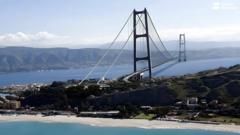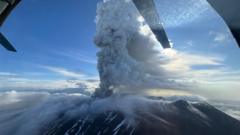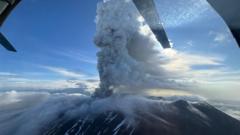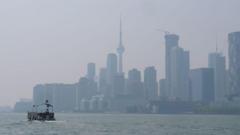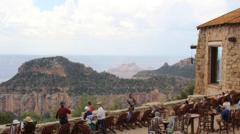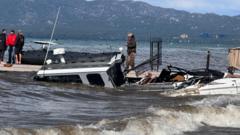Italy's Mount Etna has once again erupted, releasing large clouds of ash and smoke into the atmosphere. Reports and visuals from Sicily detail volcanic material bursting forth from the volcano on Monday morning. The National Institute of Geophysics and Volcanology (INGV) Etna Observatory recorded multiple explosions of increasing intensity early that day. Although the full impact of the eruption is still being assessed, initial observations indicate that disruptions are minimal with flights continuing undisturbed at local airports.
Mount Etna Eruption: Ash and Smoke Plumes Rise from Sicily's Iconic Volcano
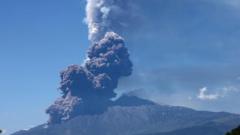
Mount Etna Eruption: Ash and Smoke Plumes Rise from Sicily's Iconic Volcano
Mount Etna's recent eruption is marked by significant volcanic activity while the surrounding area remains largely unaffected.
Mount Etna is recognized for being one of the most active volcanoes worldwide, thus eruptions are frequent, typically causing limited harm. Observational data indicated that this eruption originated from the southeastern flank of the volcano, where a known 200-meter-wide vent was located. Captivating footage circulating online displayed a blend of rapidly flowing ash, gas, and rock—known as pyroclastic flow—streaming down the volcano’s slope. Geologists monitoring the situation suggest that a portion of the crater may have collapsed, leading to the flow.
Despite the potential dangers posed by pyroclastic flows, no immediate threats to surrounding communities have been reported. The last update from INGV confirmed that volcanic activity had not progressed beyond the Valley of the Lion, a popular tourist stopping point. The monitoring agency first identified changes in the volcano's behavior at 12:39 AM local time, noting a "Strombolian" eruption type characterized by intermittent explosive activity due to gas released from the magma chamber. This release often resembles the behavior of bubbles in a carbonated beverage.
Although a red alert was issued earlier, signaling a potentially hazardous situation for aircraft, this warning has since been downgraded. The last prominent eruption, occurring in February, led to several flights being diverted from Catania airport due to thick ash clouds. Authorities have reiterated warnings for tourists to steer clear of lava flows as a safety precaution.
Despite the potential dangers posed by pyroclastic flows, no immediate threats to surrounding communities have been reported. The last update from INGV confirmed that volcanic activity had not progressed beyond the Valley of the Lion, a popular tourist stopping point. The monitoring agency first identified changes in the volcano's behavior at 12:39 AM local time, noting a "Strombolian" eruption type characterized by intermittent explosive activity due to gas released from the magma chamber. This release often resembles the behavior of bubbles in a carbonated beverage.
Although a red alert was issued earlier, signaling a potentially hazardous situation for aircraft, this warning has since been downgraded. The last prominent eruption, occurring in February, led to several flights being diverted from Catania airport due to thick ash clouds. Authorities have reiterated warnings for tourists to steer clear of lava flows as a safety precaution.


